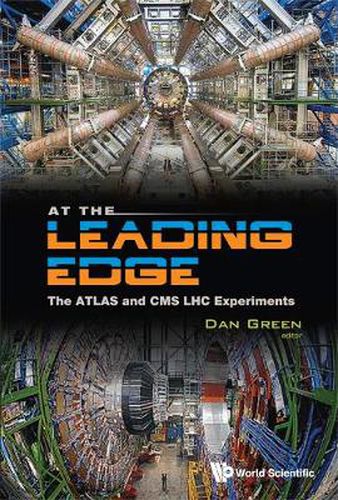Readings Newsletter
Become a Readings Member to make your shopping experience even easier.
Sign in or sign up for free!
You’re not far away from qualifying for FREE standard shipping within Australia
You’ve qualified for FREE standard shipping within Australia
The cart is loading…






Too often descriptions of detectors focus on the ‘what’ and not the ‘why’. This volume aims to elucidate how the requirements of the physics at the Large Hadron Collider (LHC) define the detector environment. In turn, the detector choices are made to adopt to that environment. The goal of LHC physics is to explore the mechanism for electroweak symmetry breaking. Because of the minuscule cross-sections which need to be explored, 0.1 fb, the LHC needs to provide 100 fb-1/yr, or an instantaneous luminosity of 1034 / (cm2 sec). With a bunch crossing interval of 25 nsec, well matched to detector speeds, there will be 25 events occupying each bunch crossing.Thus the physics requires fast, finely segmented, low noise and radiation resistant detectors which provide redundant measurements of the rarely produced electrons and muons. To achieve those goals, new ground was broken in constructing the A Toroidal LHC ApparatuS (ATLAS) and Compact Muon Solenoid (CMS) detectors in the vertex detectors, tracking systems, calorimetry, strong magnets, muon systems, front end electronics, trigger systems, and in the data acquisition methods used.
$9.00 standard shipping within Australia
FREE standard shipping within Australia for orders over $100.00
Express & International shipping calculated at checkout
Too often descriptions of detectors focus on the ‘what’ and not the ‘why’. This volume aims to elucidate how the requirements of the physics at the Large Hadron Collider (LHC) define the detector environment. In turn, the detector choices are made to adopt to that environment. The goal of LHC physics is to explore the mechanism for electroweak symmetry breaking. Because of the minuscule cross-sections which need to be explored, 0.1 fb, the LHC needs to provide 100 fb-1/yr, or an instantaneous luminosity of 1034 / (cm2 sec). With a bunch crossing interval of 25 nsec, well matched to detector speeds, there will be 25 events occupying each bunch crossing.Thus the physics requires fast, finely segmented, low noise and radiation resistant detectors which provide redundant measurements of the rarely produced electrons and muons. To achieve those goals, new ground was broken in constructing the A Toroidal LHC ApparatuS (ATLAS) and Compact Muon Solenoid (CMS) detectors in the vertex detectors, tracking systems, calorimetry, strong magnets, muon systems, front end electronics, trigger systems, and in the data acquisition methods used.